Our garden is located on the south side of a steep hill overlooking the Woronora River at Bonnet Bay, just south of Sydney. When we bought the land, it was a beautiful, relatively undisturbed bush block, with wonderful stands of macrozamia cycads and gum trees. We wanted minimum disturbance to the natural vegetation during the building, however we did not anticipate that the bulldozer driver, who cleared a space for our home, did not have the same appreciation for the natural vegetation as we did. Consequently, much of the existing vegetation was destroyed by the bulldozer either removing it or covering it with spoil. When the house was finally completed, we were faced with a fairly devastated block. In order to create our garden, we had to build a number of retaining walls, paths and steps to access the different levels.
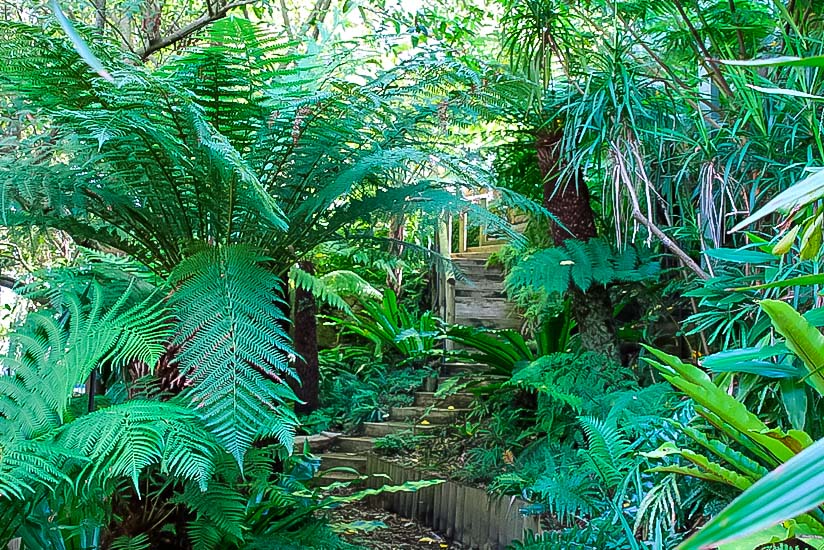
When designing the garden we were faced with a number of problems. The southerly aspect meant that the plants received reduced light, which was further exacerbated by the shadow cast by our newly built home. This resulted in a major part of the garden being in part shade for a lot of the day. Another problem was that in summer, part of the proposed garden area received the full blast of the western sun. In addition the soil consisted of a mixture of spoil created by the clearing of the site and the accumulation of a vast assortment of building rubble.
The challenge was to create a garden that would cope with the shade, especially in winter and the western sun in summer as well as the poor soil we were left with. We wanted to create a garden that would provide a tranquil, cool and inviting environment to compliment our home. We wanted also to be able to wander around it and to be able to relax from the tensions of everyday life.
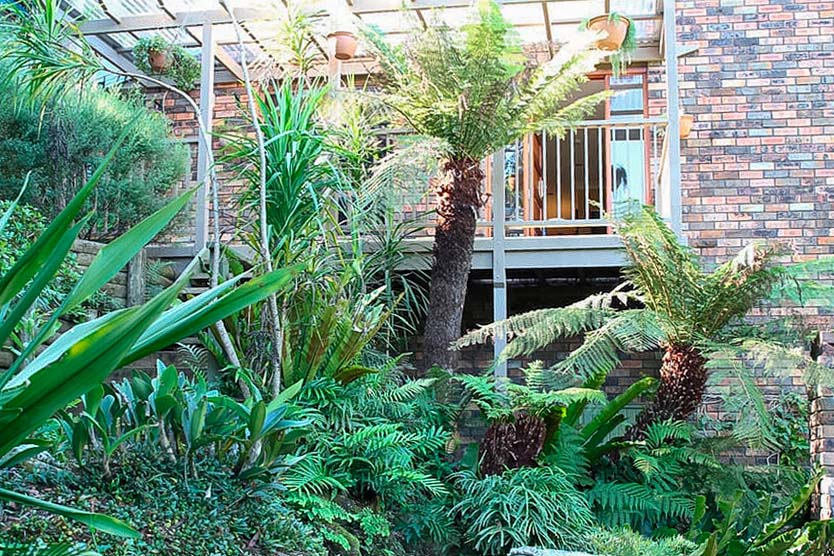
As we are passionate about Australian native plants and were members of the Australian Plants Society NSW (APS NSW), we wanted to create a garden consisting of mainly Australian native plants. We were given advice and guidance from fellow members of our local APS group, ideas from visits to members’ gardens and inspiration from the local Joseph Banks Native Plants Reserve at Kareela. After pooling all these ideas and support, we decided to create a rainforest garden with ferns as the understory.
We felt that ferns would create the lush, tranquil and luxuriant environment that we wanted. After much terracing, retaining and building of walkways, we set about preparing the soil for planting. As it was too big a task to remove the building rubble we dug it in, spread the area with a good dose of blood and bone and covered it with a 125 mm depth of eucalypt leaf mulch. The mulch eventually broke down to provide nutrients to the soil. We have topped up the leaf mulch every 3-4 years and now have a lovely rich layer of black loam, which provides an ideal environment for plants to grow in. Every six months we spread a 50% mixture of blood and bone, as fertilizer and Saturaid to increase the moisture retention of the soil, followed by a good watering.
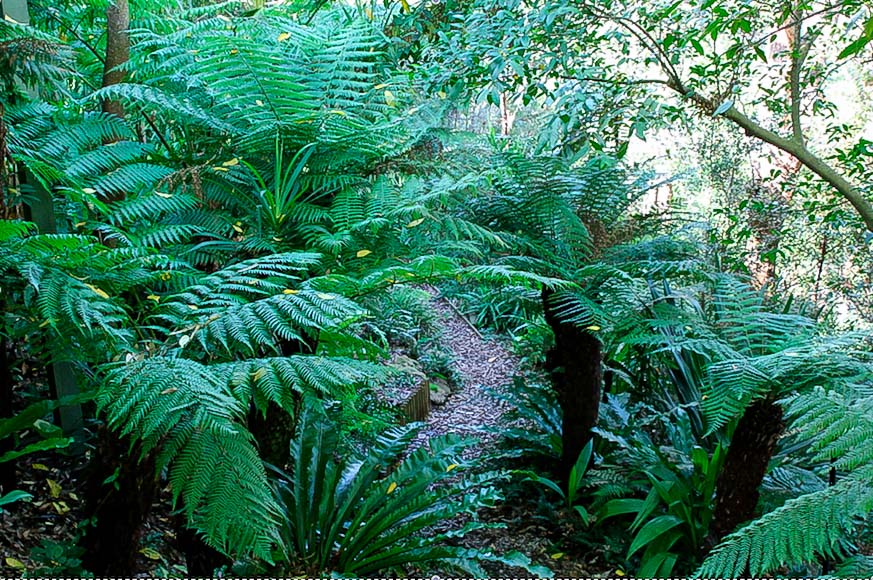
After we had finished the initial mulching, we immediately began the task of choosing and planting a variety of suitable native rainforest trees to provide a canopy to protect for the understory plants. These included Bangalow palms (Archontophoenix cunninghamiana), cabbage tree palms (Livistona australis), native frangipani (Hymensporum flavum), a sandpaper fig (Ficus coronata), and foam bark (Jagera psedorhus). For the understory plants we chose a large variety of native ferns, native cordylines, Gymea lilies and other shade tolerant plants.
Despite the fact that the there was little canopy initially to protect the ferns they grew extremely well and survived the harsh conditions with minimal watering. The initial layer of leaf mulch was sufficient to retain the necessary moisture they required, however the tree fern fronds of Dicksonia antarctica did suffer from burn off on very hot summer days. Over the years we have added a large variety of ferns and have collected a number of mature Dicksonia ferns, many of which we bought quite cheaply on eBay, or found dumped on nature strips during council clean ups. Most of the garden relies on natural rainfall, however, we installed watering systems to ensure that the Dicksonia ferns don’t dry out, as they have a high demand for moisture. The Cyathia ferns, on the other hand, are much more tolerant and relay on rainfall. In the design of our garden we mass planted the understory plants in clumps in order to give repetition and provide a unity to the garden which in turn created a harmonious feel in the garden.
Our garden has now been established for 35 years and has matured into a relaxing and tranquil rainforest garden with a very tropical feel. Whilst parts of the garden are very shady, they are full of foliage contrast, which gives an extra dimension to the garden.
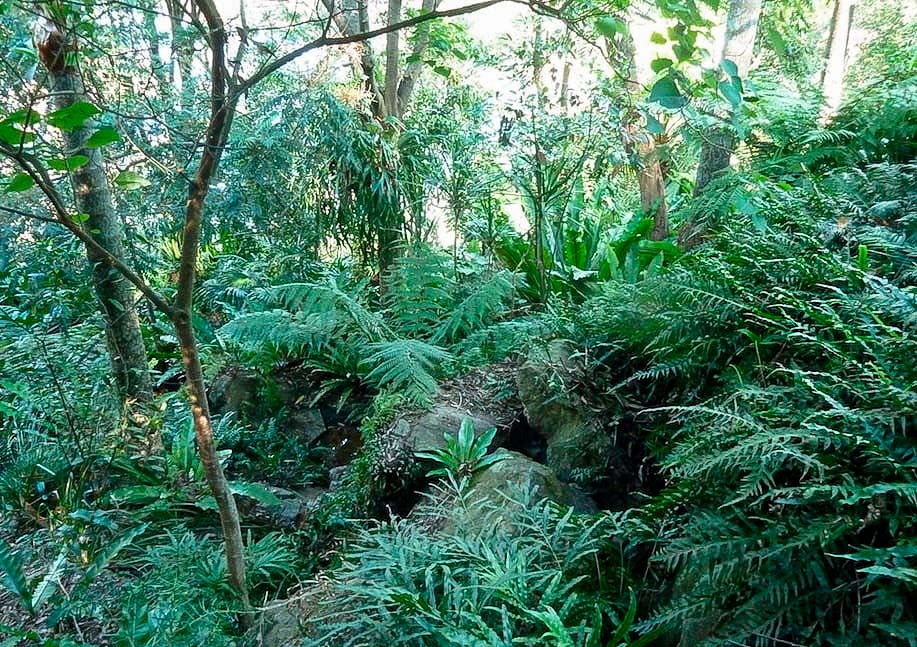
Over the years, we have developed a great passion for ferns for a number of reasons:
- They provide a tranquil, cool, tropical and inviting aspect to any garden.
- The majestic tree ferns Cyathia australiis, Cyathia cooperi and Dicksonia antarctica add a soft, cool charm to the garden, whereas other ferns, such as the Asplenium, Blechnum, and Pteris species add variety and interest.
- They are very easy to relocate if they outgrow their position in the garden. Over the years a large number of the ferns in our garden have been moved to other positions. You can’t do this with many other native plants.
- Whilst ferns look remarkably gentle and fragile, they are very forgiving plants and most are easy to grow in the garden. They are generally associated with moist areas, we have found them to be able to withstand long periods of dry weather, with only the occasional watering during summer.
- In our experience, pests rarely affect them. The only pest that we have come across is with some of the Bird’s Nest Ferns that may be attacked by scale. This indicates that the plants are under stress, which is generally due to a lack of water. The scale is easily treated with Pest Oil.
- They readily self propagate by spores in the garden. Birds Nest Ferns and Trees Ferns regularly pop up throughout the garden. We will collect them, pot them up and grow them on to either plant in the garden or give to friends.
- They are also easy to propagate by division, from spores (all ferns), stolens (Blechnum, and Microsorum sp.) or by taking bulbils (plantlets) from the ‘hen and chicken’ ferns such as (Asplenium bulbiferum).

There is a fern for every situation.
Within the same genus, there is incredible variety of form, such as the Asplenium.
We have been very fortunate to share our garden with family and friends and with members of the public. These visits have been organised by the Sutherland Group of the Australian Plants Society and Open Gardens Australia. We have also been fortunate to have media coverage through Gardening Australia and Better Homes and Gardens. The latter provide a wonderful opportunity not only to share our garden with others but also to promote the joy of growing Australian plants in the garden.
Ferns like Asplenium flabellifolium (Necklace fern) and Pellaea falcata var. nana (Dwarf Sickle Fern) provide attractive groundcovers in shady areas of the garden.
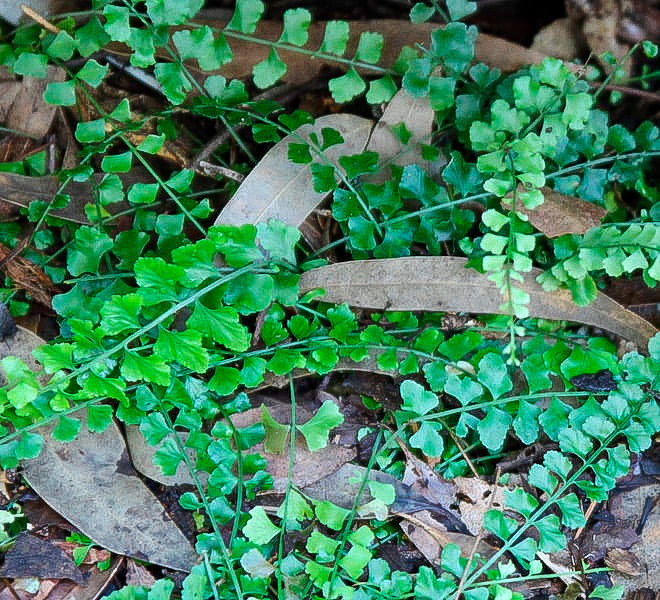
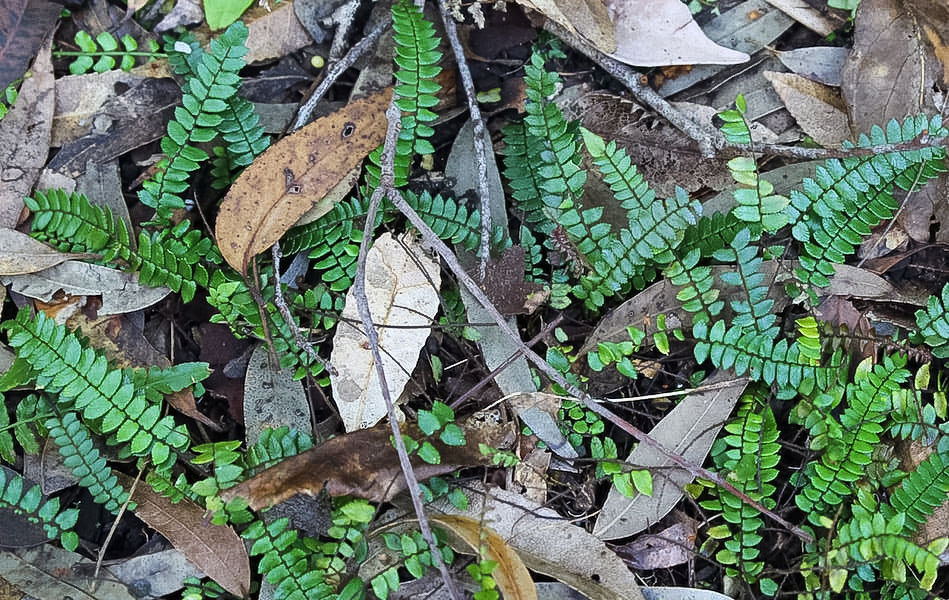
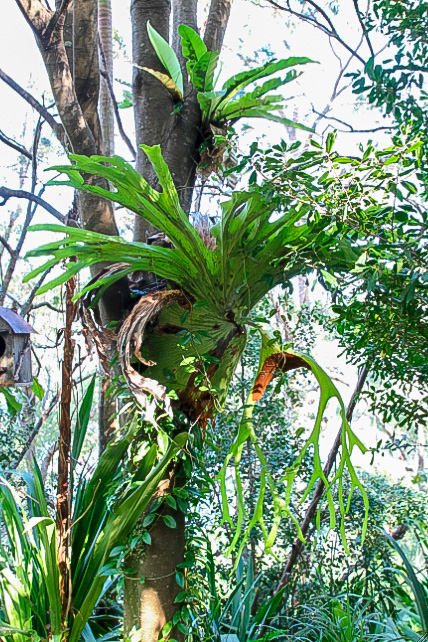

John is the Vice President of APS NSW and is a member of the ANPSA Fern Study Group.
Story previously published in the Fern issue of the Australian Plants journal and in GardenDrum: https://gardendrum.com/2016/02/05/growing-native-ferns-in-a-shaded-garden/
